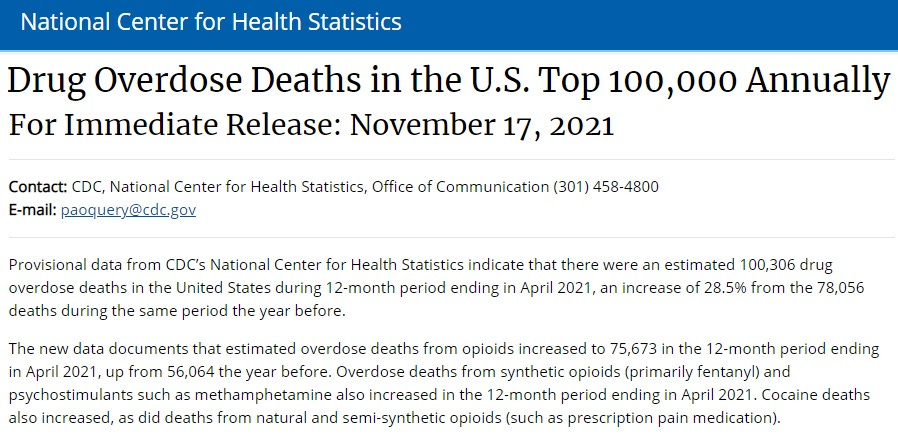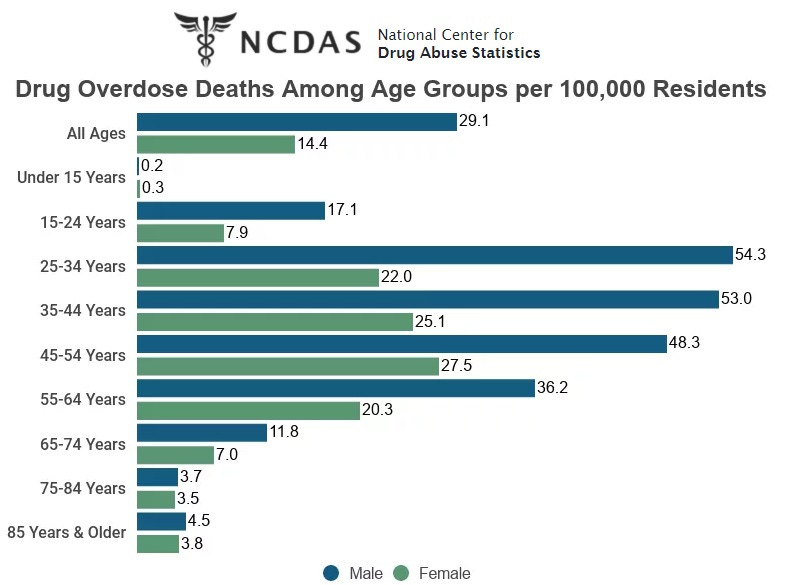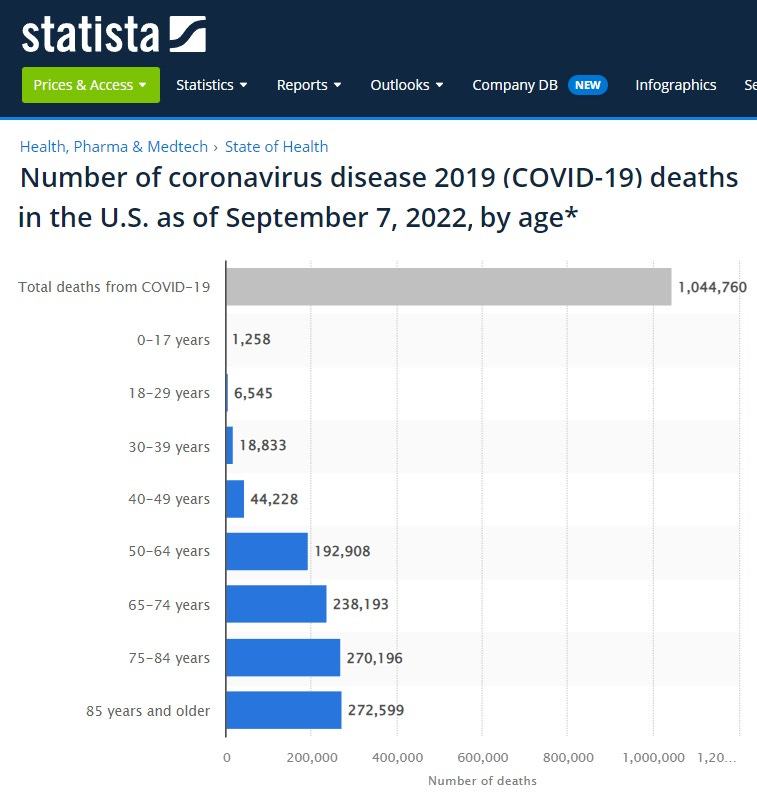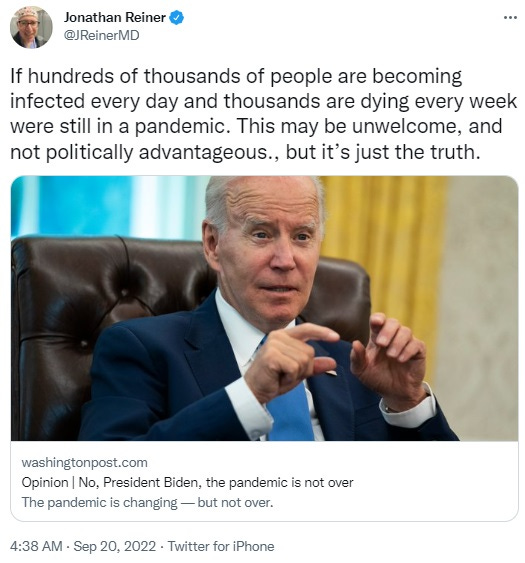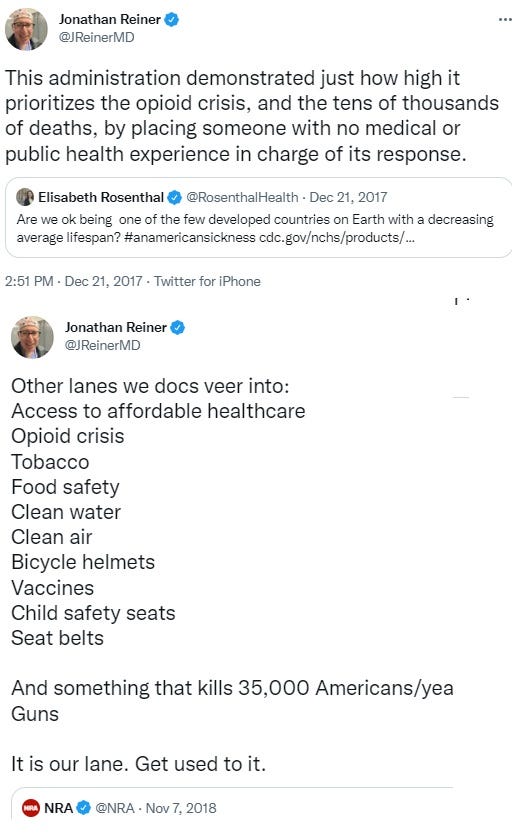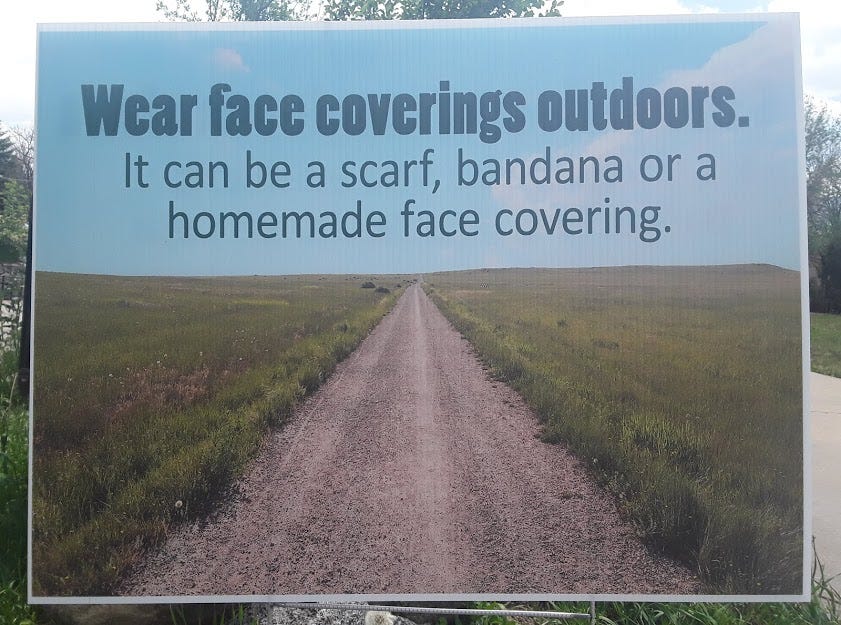Fatal car crashes jumped 10.5 percent and lethal overdoses 28.5 percent in the U.S. in 2021
Every day, various types of preventable deaths erase far more life-years than covid, a spectacle that has established the discomfiting pliability of the typical American mind
(Reminder to newsletter recipients: You can choose to receive posts only in certain categories—right now, those include “competitive running,” “the media and culture wars,” “personal essays,” and the dreaded “images only”—by going into your Substack settings and selecting or deselecting the appropriate boxes.)
In 2021, 118 people died per day in the U.S. traffic accidents, including pedestrians and others not inside any involved vehicles. In case you can only read certain fonts, this was a 16-year high and a 10.5-percent increase over the previous year.
In the five years spanning 2016 through 2020, slightly over half of the victims of traffic fatalities in the U.S. (51.5 percent, to be more precise) were under the age of 45.
If the median age of someone who dies in a car crash is around 45, then on average, a person who dies in a car crash in this country has about 32 years left to live, per actuarial data (the U.S. life expectancy is around 77 years and dropping). This is clearly a rough estimate, as well as an abuse of how life expectancy is determined. But as you’ll soon see, that’s all it needs to be.
If the 118 people who died each day last year on American roads had an average of 32 years left to live, then every day, around 3,776 life-years (118 × 32) were lost to traffic accidents. (According to the National Safety Council, Americans have a lifetime risk of dying in a motor vehicle accident of 1 in 107.)
The jump in traffic deaths from 2020 to 2021 from 38,824 to 42,915 was impressive, representing the single-highest one-year increase since the government began collecting these statistics and the highest absolute total since 2005. But it was nothing compared to the one-year rise in fatal drug overdoses from 78,056 to 100,306 in the one-year period ending in April 2021, a 28.5-percent increase.
So, between April of 2020—the approximate onset of covid-inspired citizen restrictions—and April of 2021, drug overdoses killed about 275 Americans a day, with about 205 of those, or three-fourths, attributable to opioids (mostly heroin, fentanyl, and oxycontin). Fatal overdoses in the opioid category rose by a horrifying 35 percent compared to the one-year period between April 2019 and April 2020.
Over twice as many men die from overdoses in the U.S. as women. who are typically a little older than men who die this way. Eyeballing the graph below, it looks like the median age of an overdose victim is about 40, maybe a little younger. It’s probably safe to assign an average of 37 years of life lost in these cases. That means that every day, over 10,000 American life-years (275 × 37 = 10,175) are lost to drug overdoses.
None of this has been close to the forefront of the news cycle. That’s because all of America’s fixation on theoretically preventable causes of mortality was shifted for over two years onto the coronavirus alone.
The average age of someone who had died of or with a strain of coronavirus is harder to estimate; for one thing, it’s not a rough bell-curve distribution but instead skews right, i.e., old. For another, the data are is are completely shitty, with a fuck of a lot more noise than is the case with traffic fatalities, but shitty data is are is all we* have.
About three-fourths of covid deaths occur in people over 65. On top of that, unlike car crashes and (to some extent) overdoses, covid preferentially targets not only the old but the especially infirm across age groups (including drug addicts). So, it’s probably safe to say that the average person who dies from covid probably had no more than five years left to live.
At the time President Biden declared the “pandemic” over, about 400 Americans a day were listed as dying from the disease. That amounts to around 2,000 life-years a day. If you trust my math in the preceding paragraphs, that’s about half the number lost to traffic accidents, about a fifth of the number lost to drug overdoses, and about 15 percent of the combined total of life-years vaporized by those two maladies.
While most Americans were long ago ready for masking and social-distancing mandates to be over, and have at least quietly accepted that vaccines and boosters promised to prevent covid transmission and infection failed to do so, a sizable contingent of zealots continues to operate on social media.
Recall that Twitter is essentially a place where unmoored alarmists (da hos) and self-important lying douchebags (da pimps) can and do say whatever they want provided their blather hews—intentionally or otherwise—with government-approved narratives concerning covid, the war in Ukraine, and the suite of gender-identity pathologies. Hence you have idiots like this guy, maybe only the second-dumbest blue-check Twitter user surnamed Reiner:
Does Dr. Reiner care about opioid deaths? Well, in 2018, he claimed to, after complaining in 2017 that the Trump administration was botching the crisis. But he’s been silent on the matter since.
Reiner is the classic caricature of someone who feigns giving a shit so he can garner online adulation, even if all of it is from cranks and social lepers. He should earn at least honorable mention if Freddie DeBoer ever releases a supplement to his roster of good white men. He appeals to unwell people who have nothing better to do than insist everyone is wrong to be going around killing people with their too-close, unmasked faces.
But the problem of zealots is the tip of the shitberg, enabled and catalyzed by the mass-gaslighting of the American public about the dangers of covid to younger, healthy people and the efficacy of masking and the coronavirus vaccines, or neo-vaccines. Even normal-minded folks are still carrying around all sorts of false ideas that came straight from Anthony’s Fauci’s boosted, infected, and prevaricating head, and are instinctively prone to dismiss me as, if not a crank exactly, a little undersold on the correct science. That’s too bad, is my only answer at this point.
The same people who still think the lockdowns and fear-mongering and crushing of small businesses and other dreams were basically worth it are probably also pleased that none other than Joe Biden is supposedly doing something about the opioid crisis.
How timely. I can tell you exactly what “naloxone products” means here: Vivitrol. I recently wrote about reviewing this bullshit drug in the Boulder Weekly in 2017, but haven’t concluded that miniseries, which meshes perfectly with Biden’s rewarding the pharmaceutical industry for producing a drug that not only doesn’t help curb the opioid crisis, but also directly and purposely feeds it. I’ll describe in detail in a future post how this cycle works, but it’s not hard to figure out.
This is not a warning to avoid the relatively few remaining covid zealots and their nonsense. It’s a revelation of how easy it is to convince most of the American public of whatever narrative is required for control.
It’s a guarantee that, if for some strange and presently unforeseeable reason, the government sought to broadly discourage motor-vehicle use, it could effectively do so by pushing the death count through mass-media channels and massaging the statistics to maximal alarmist effect. Because if you watch the regular news, even if you think you have critical-thinking barriers in place, chances are still excellent that you will accept government messages like these as sane and acceptable even when a remote part of your mind is desperately ringing the bullshit alarm.




